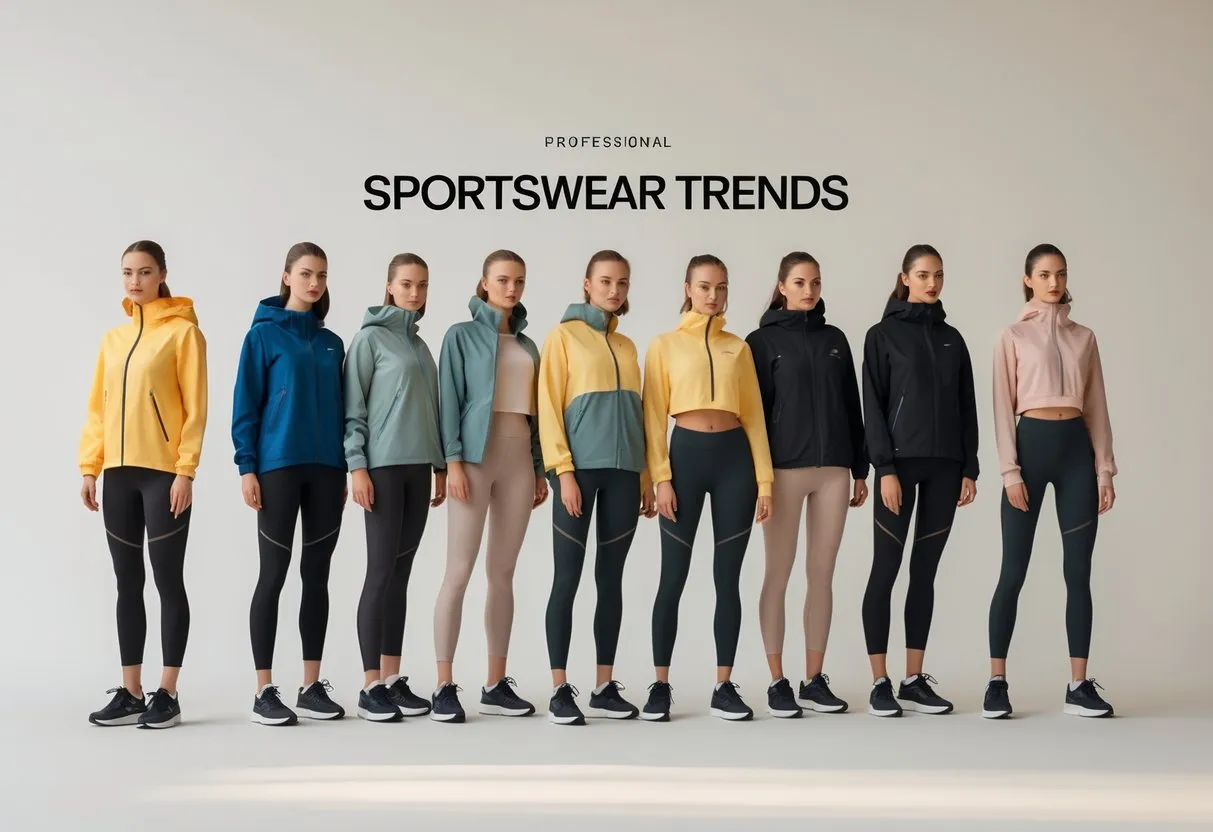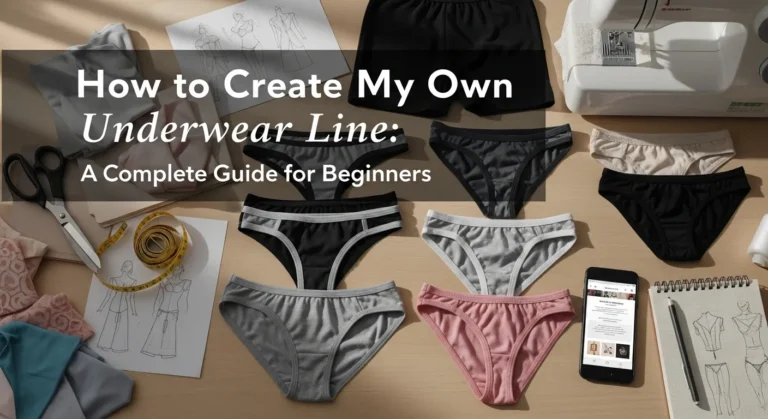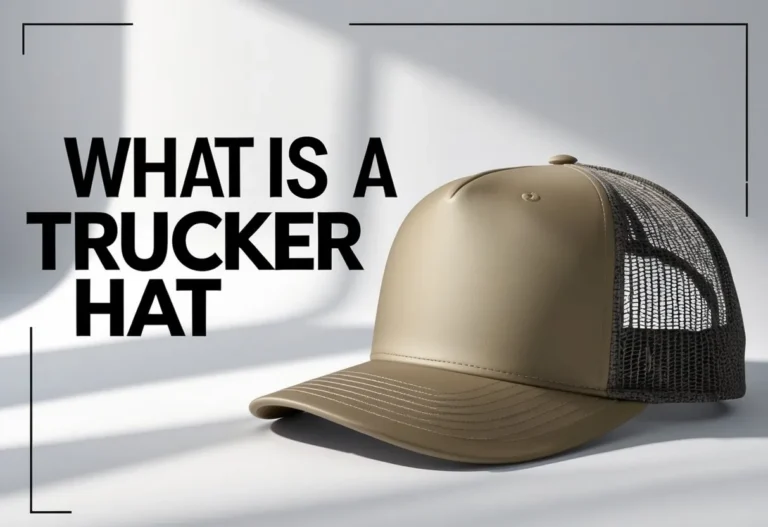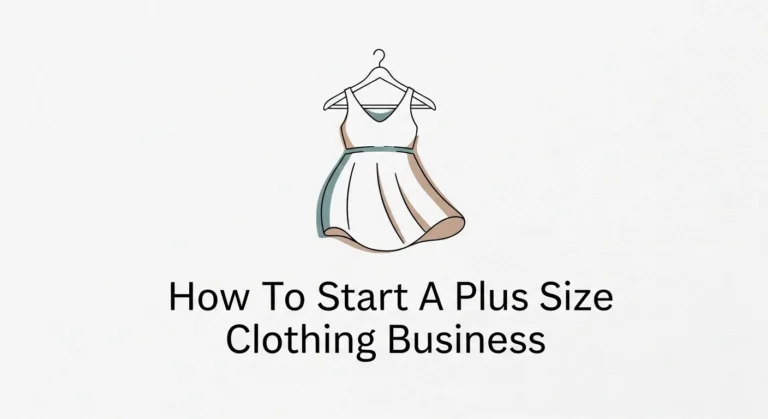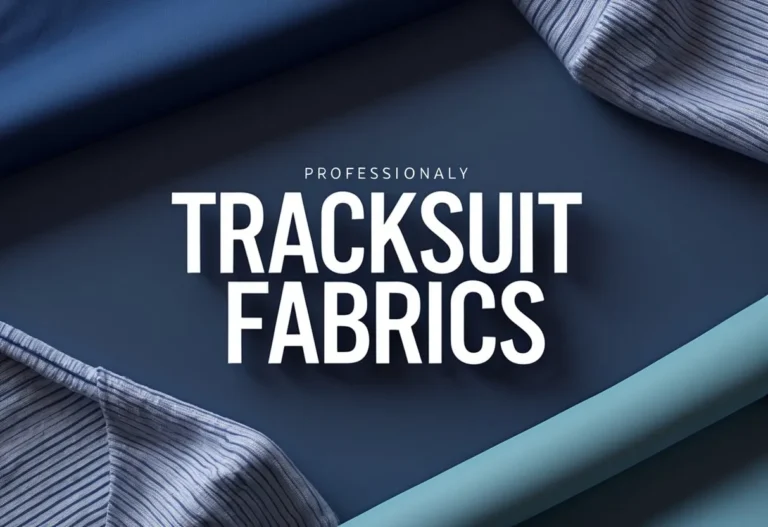Sportswear Trends Dominating the Fitness Fashion World
Sportswear trends are constantly changing as new ideas, materials, and technologies emerge. These trends reflect what consumers want in terms of comfort, style, and performance. They affect both everyday activewear and specialized athletic gear.
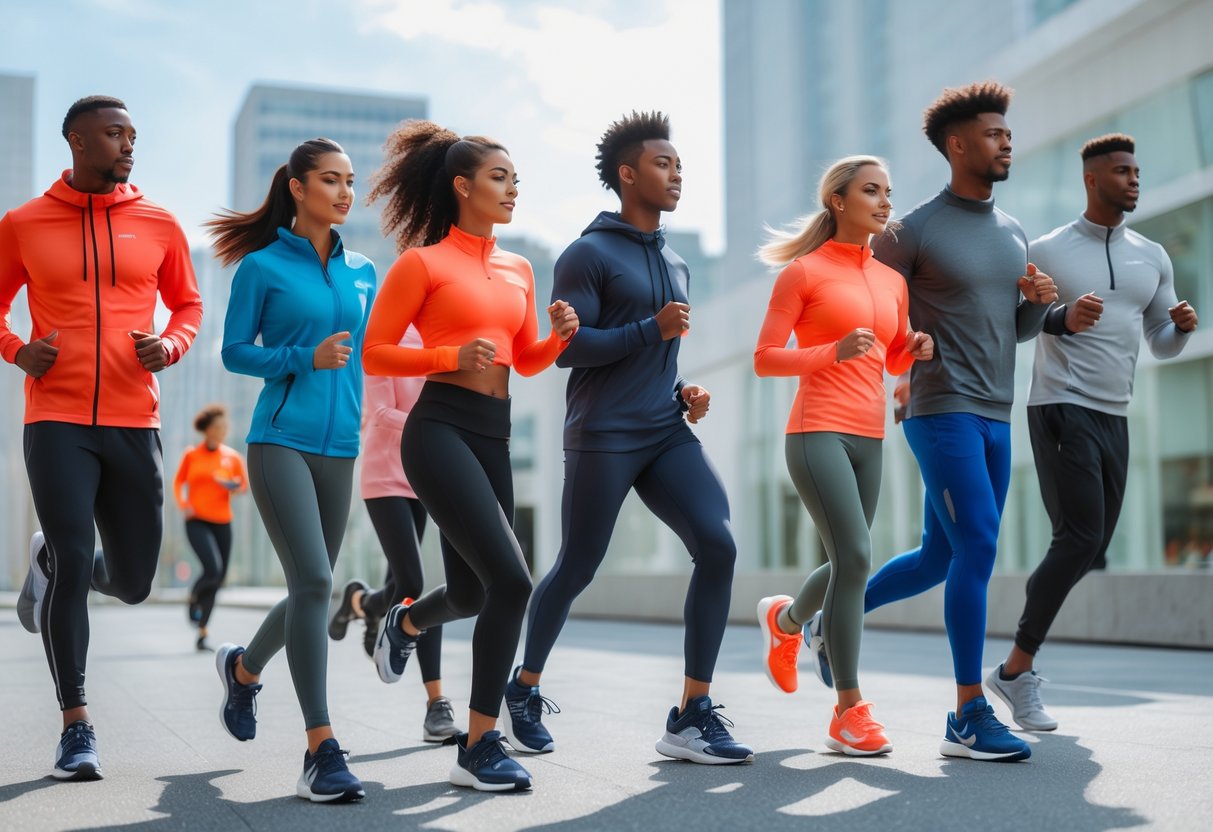
The most important aspect of sportswear trends is how they balance practical use with current fashion and sustainability. Designers and brands work to create clothing that meets the needs of athletes while appealing to a wider audience. This makes sportswear a key part of both fitness and casual wardrobes.
1) Sustainable fabrics like recycled polyester
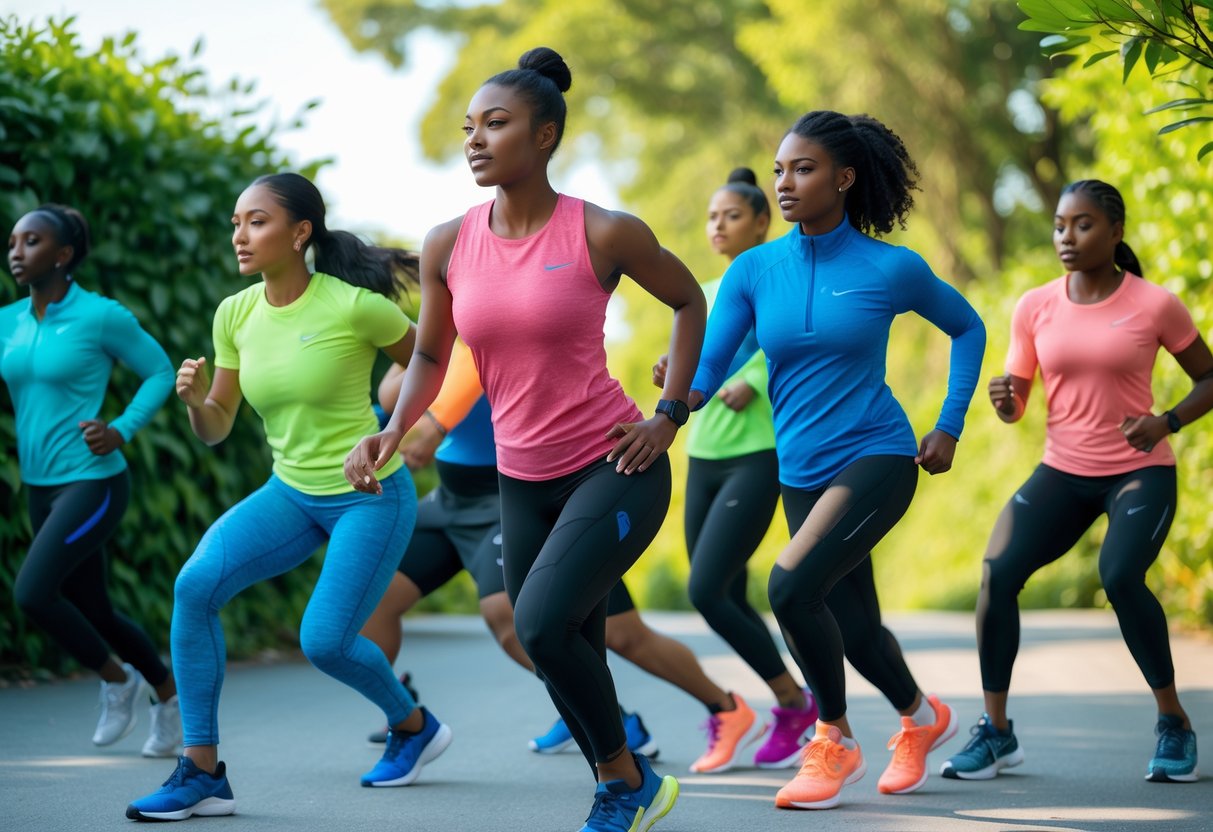
Recycled polyester is a key material in sustainable sportswear. It is made by reprocessing plastic bottles or old polyester garments. This process reduces waste and lowers the demand for new petroleum-based fabrics.
This fabric offers similar performance to regular polyester. It is durable, lightweight, and helps with moisture-wicking. Brands use recycled polyester to create sportswear that meets consumer needs while being eco-friendly.
Using recycled polyester cuts down on pollution and energy use compared to making virgin polyester. It helps manage plastic waste, which is a global environmental issue.
Many activewear companies now prioritize recycled polyester in their collections. The fabric supports sustainability goals without sacrificing comfort or style. This trend is growing as more consumers seek responsible clothing options.
2) Multi-functional activewear designs
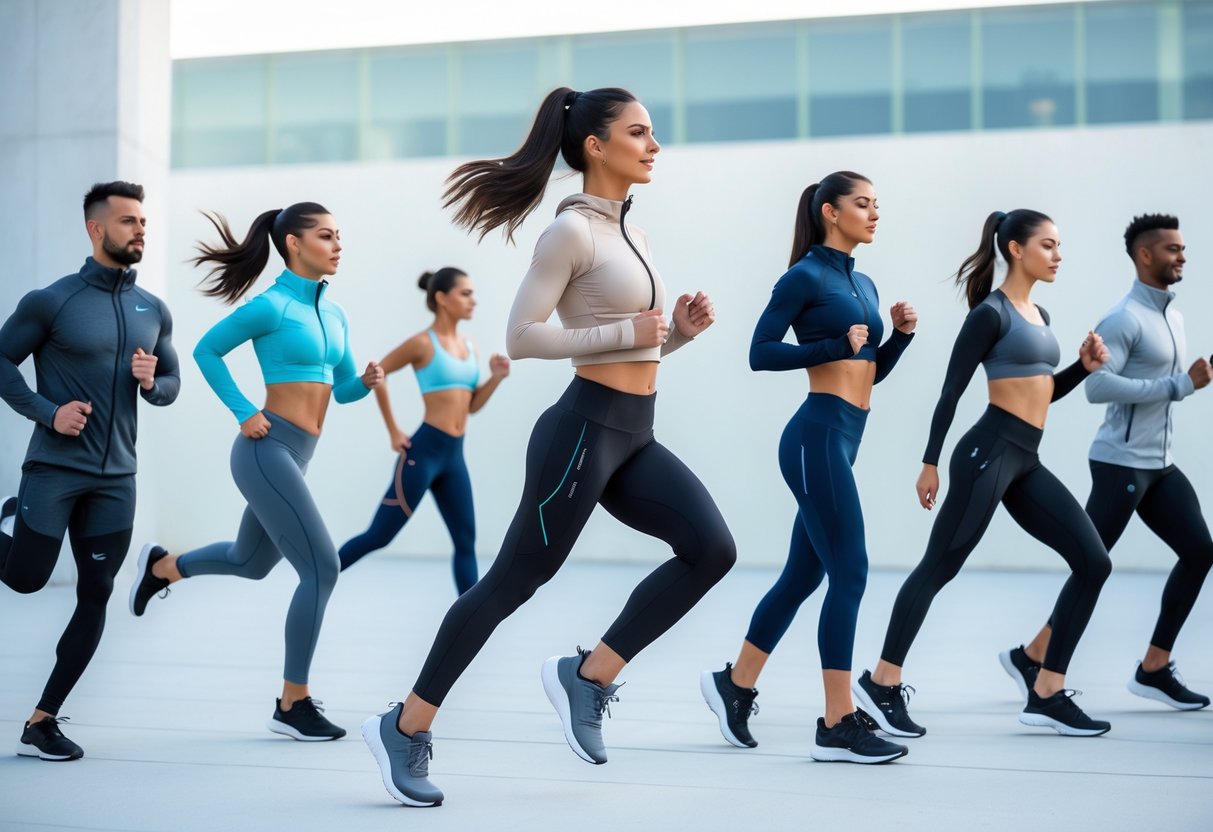
Multi-functional activewear is becoming very popular in 2025. These designs allow people to wear the same clothes for different activities, like working out and running errands. This saves time and adds convenience.
Garments often include features like reversible leggings or removable hoods. These features make the pieces adaptable to different uses and styles. It lets the wearer move smoothly from the gym to daily life without changing clothes.
Brands focus on combining style with function. The goal is to create pieces that look good and perform well. This trend reflects how people want clothes that support both fitness and everyday activities.
The demand for versatile sportswear shows a shift toward smarter, more practical fashion. It meets the needs of busy lifestyles while keeping comfort and appearance in mind. Multi-functional activewear is becoming a key part of modern wardrobes.
3) Wearable technology integration

Wearable technology is becoming a key part of sportswear. It includes devices that track heart rate, sweat levels, and other performance data. These smart fabrics and sensors help athletes monitor their physical state in real time.
Many sports brands now embed these technologies into their clothing. This allows for better tracking without the need for extra gadgets. Athletes and coaches use the data to improve training and avoid injuries.
Artificial intelligence plays a growing role in wearable tech. It helps analyze data to predict risks like potential injuries. This makes training safer and more effective.
Despite the benefits, challenges remain. Data privacy and device accuracy are major concerns. Ensuring fair access to this technology is also important for the sports community.
Overall, wearable technology integration is shaping the future of sportswear. It offers new ways to enhance performance through detailed, real-time information.
4) Bold, futuristic patterns
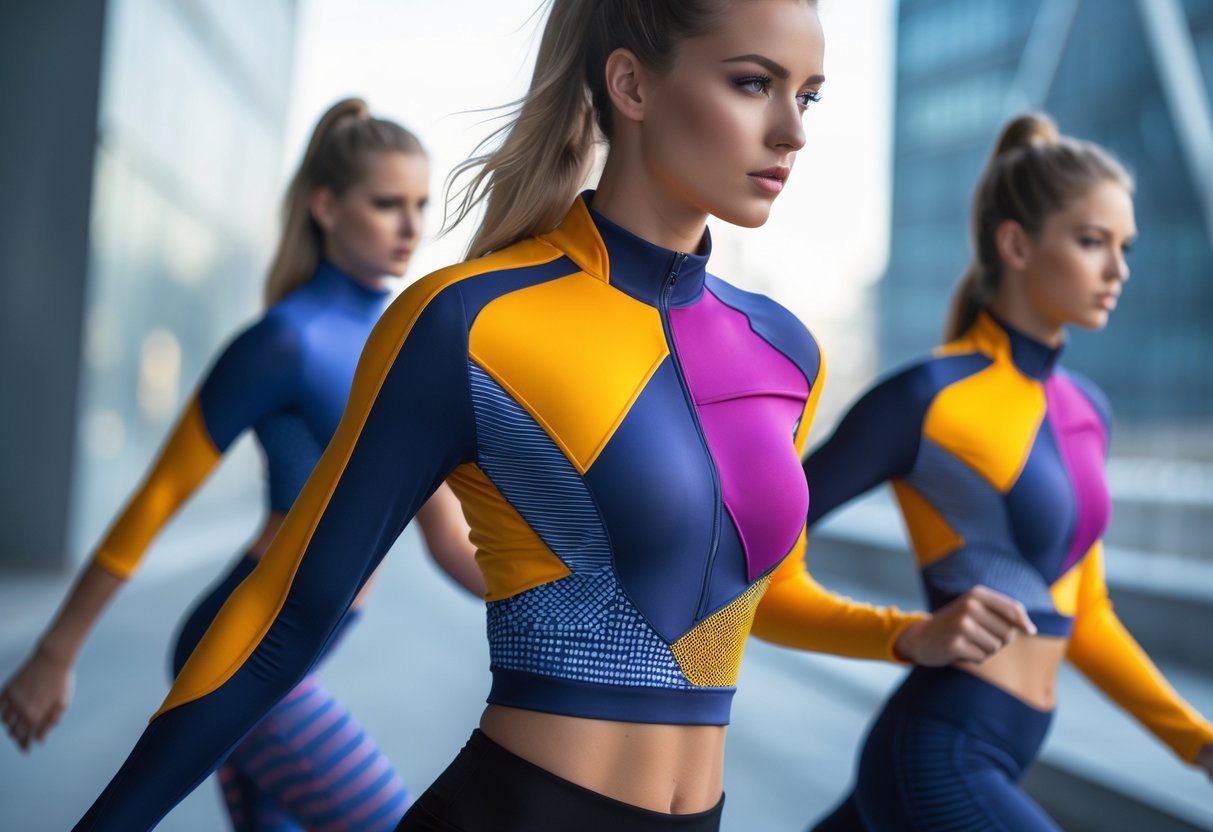
Sportswear in 2025 features bold, futuristic patterns that catch the eye and break away from traditional designs. These patterns use sharp lines, geometric shapes, and abstract prints to create a modern look.
The designs often combine bright colors like electric blue and vivid orange with darker tones. This contrast gives the clothing an energetic and dynamic feel.
Brands are focusing on patterns that not only look stylish but also highlight movement and athletic performance. These patterns help wearers feel confident both during workouts and in everyday wear.
Futuristic patterns also emphasize individuality. Customizable options allow people to express their personal style while staying functional.
This trend reflects a shift toward activewear that balances fashion and technology without sacrificing comfort or durability.
5) Customizable sportswear options

Customizable sportswear allows athletes and teams to create clothing that fits their specific needs and style. This includes personalized jerseys, shorts, and outerwear made to exact measurements or design preferences.
Many brands now offer options like full sublimation printing, which lets users add unique graphics and colors. This helps teams and individuals stand out while representing their identity clearly.
Performance fabrics are often part of customizable gear. These materials can improve comfort, regulate temperature, and enhance movement. Athletes can choose fabrics that match their sport and climate.
Sustainability is also a key focus in customization. Some options use eco-friendly fabrics and processes to reduce environmental impact. This adds value without sacrificing quality or style.
Customization is more than appearance. It gives users the chance to balance fashion with function. As a result, personalized sportswear continues to grow in popularity for both professional athletes and casual fitness fans.
6) Inclusivity in sizing and styles
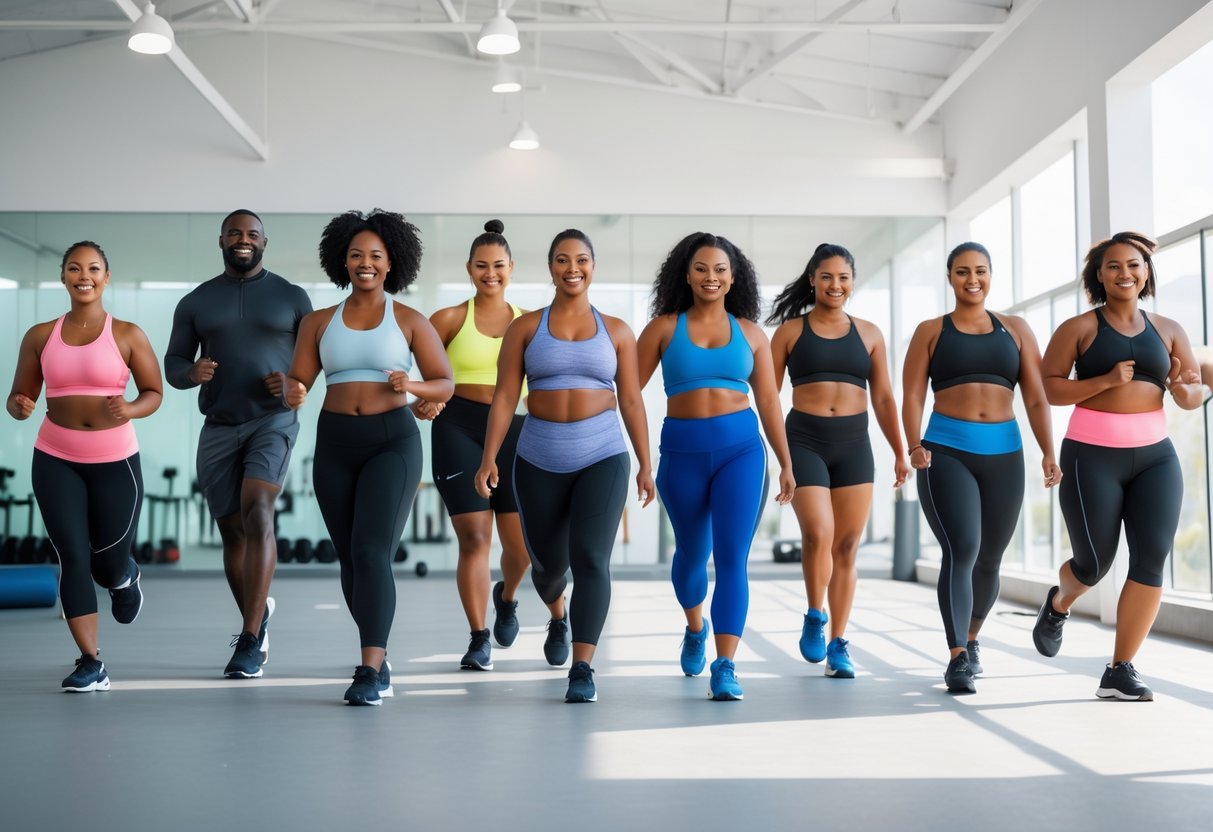
Sportswear brands are increasingly offering more sizes to include a wider range of body types. This shift responds to customer demand for clothing that fits well and feels comfortable at all sizes.
Inclusive sizing goes beyond just numbers. Brands focus on designing styles that work for different shapes, ensuring both function and comfort. Flexible fabrics and thoughtful cuts help athletes of all sizes move freely.
The plus-size market in sportswear continues to grow. Studies show this segment is expanding, pushing brands to develop products that promote body positivity and accessibility.
Despite progress, some brands still struggle with perfecting fit for larger sizes. However, more companies now see inclusivity as essential, not optional, in their collections.
This trend supports diversity in sports by making athletic wear more available to everyone. It also challenges old standards, helping people feel represented and confident in their gear.
7) Seamless, chafe-free construction

Seamless sportswear is made using special knitting techniques that create garments without seams or stitches. This method results in clothing that fits the body smoothly and reduces irritation caused by seams rubbing against the skin.
The lack of seams helps prevent chafing, which is a common problem during intense physical activities. It also improves comfort, allowing athletes to move freely without distraction.
Seamless designs often use stretchy, breathable fabric. This enhances flexibility and helps manage sweat, making the clothing ideal for various sports.
In addition to comfort, seamless construction offers better durability. Without seams to weaken the fabric, these garments are less likely to tear or wear out quickly.
This trend reflects a growing focus on performance and comfort in sportswear. Many brands now include seamless pieces in their collections to meet the needs of active consumers.
8) Performance-driven moisture-wicking materials
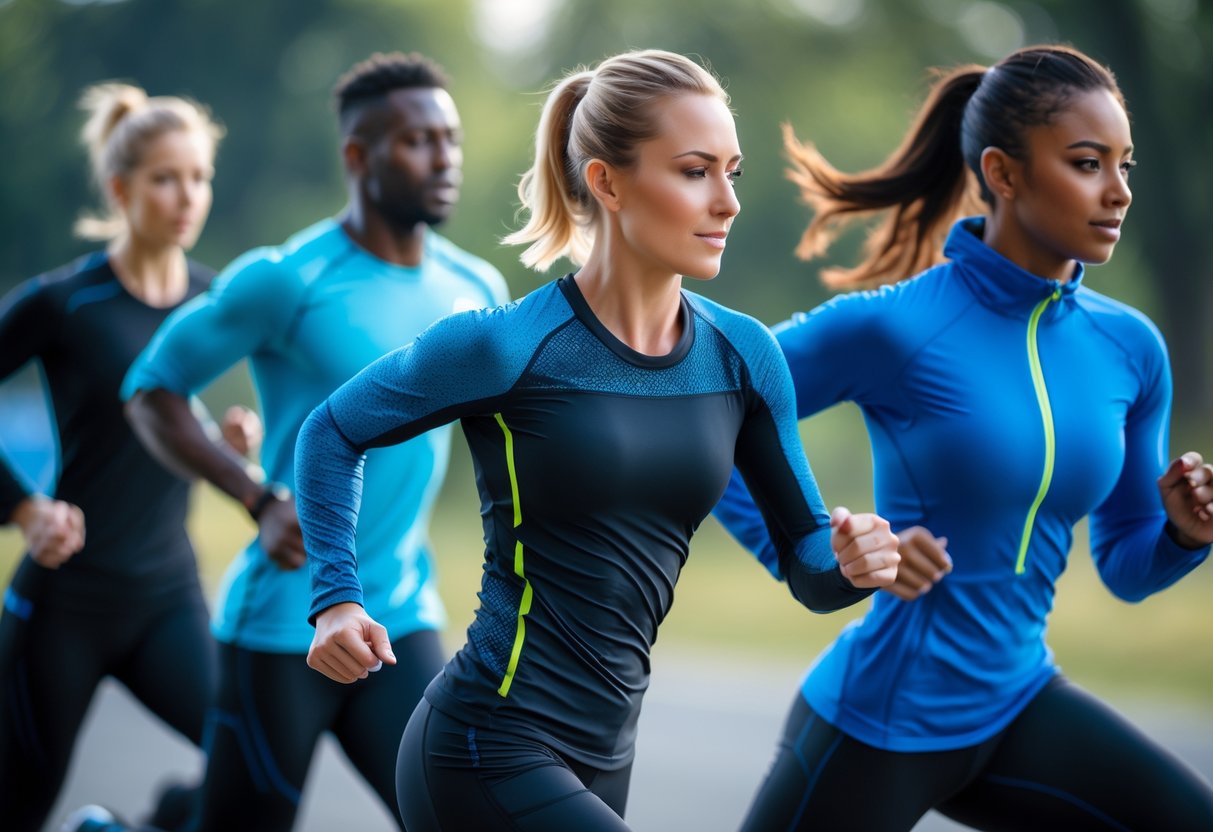
Performance-driven moisture-wicking materials are key to modern sportswear. These fabrics pull sweat away from the skin and help it evaporate quickly. This keeps athletes dry and comfortable during workouts.
These materials often use synthetic fibers like polyester, nylon, and spandex. Many also include recycled fibers to improve sustainability. Moisture-wicking works through capillary action, drawing moisture to the fabric’s surface.
Smart fabrics now combine moisture management with other features. Some use sensors to monitor body temperature and adjust breathability in real-time. Nanotechnology adds waterproof and antibacterial coatings to fight odor and repel moisture.
Breathability and stretch are important alongside moisture-wicking. This allows better air flow and more freedom of movement. Durability ensures the fabrics hold up under intense activity and frequent washing.
Overall, these performance-driven fabrics help athletes stay focused. They balance comfort, function, and sustainability for better sportswear experiences.
9) Athleisure styles blending gym and streetwear

Athleisure combines the comfort and function of gym clothes with the look of streetwear. This style lets people wear workout pieces in everyday settings without losing style.
It often features items like leggings, hoodies, and sneakers that work well both for exercise and casual wear. Brands are focusing on materials that are breathable and flexible but also look good outside the gym.
This trend blurs the line between activewear and fashion. People can move easily from workouts to running errands or meeting friends while staying comfortable.
Athleisure also brings in influences from streetwear, such as bold prints and layering. It allows for versatile outfits that look stylish but still serve a practical purpose.
Influencers and fashion brands continue to push athleisure as a popular choice. The styles often mix simple gym basics with trend-focused pieces to create fresh everyday looks.
10) Adaptive clothing for various activities
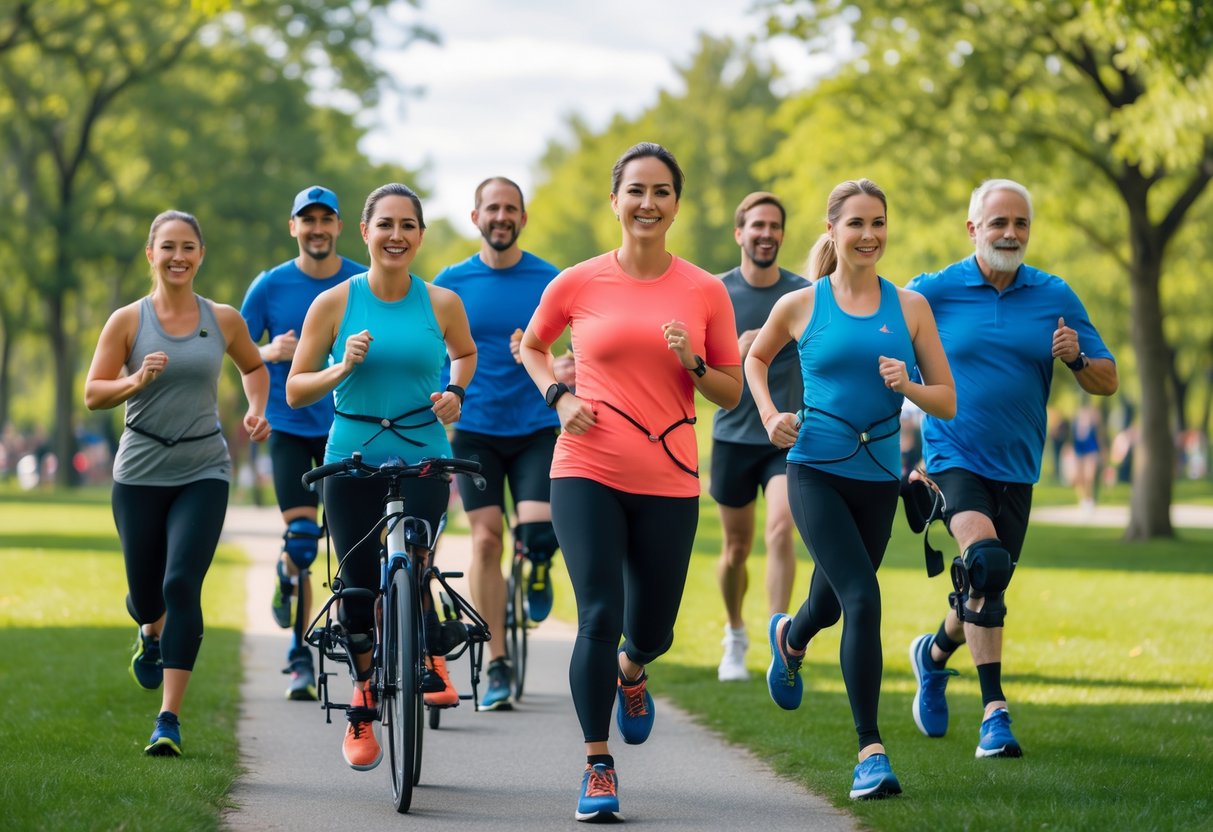
Adaptive clothing is designed to support people with different needs during many types of activities. These garments include features like adjustable closures, magnetic fasteners, and easy-access openings. This design helps people dress comfortably and move freely.
Brands are creating adaptive sportswear to work well in exercise, casual wear, and outdoor settings. The clothes adjust to different body movements and provide comfort during physical activity. This makes them suitable for athletes and everyday users.
Adaptive designs often include elements that enhance seated comfort and allow easy changes. They focus on both function and style to ensure users feel confident. These clothes help remove barriers and promote inclusion in sports and daily life.
Key Factors Influencing Sportswear Trends
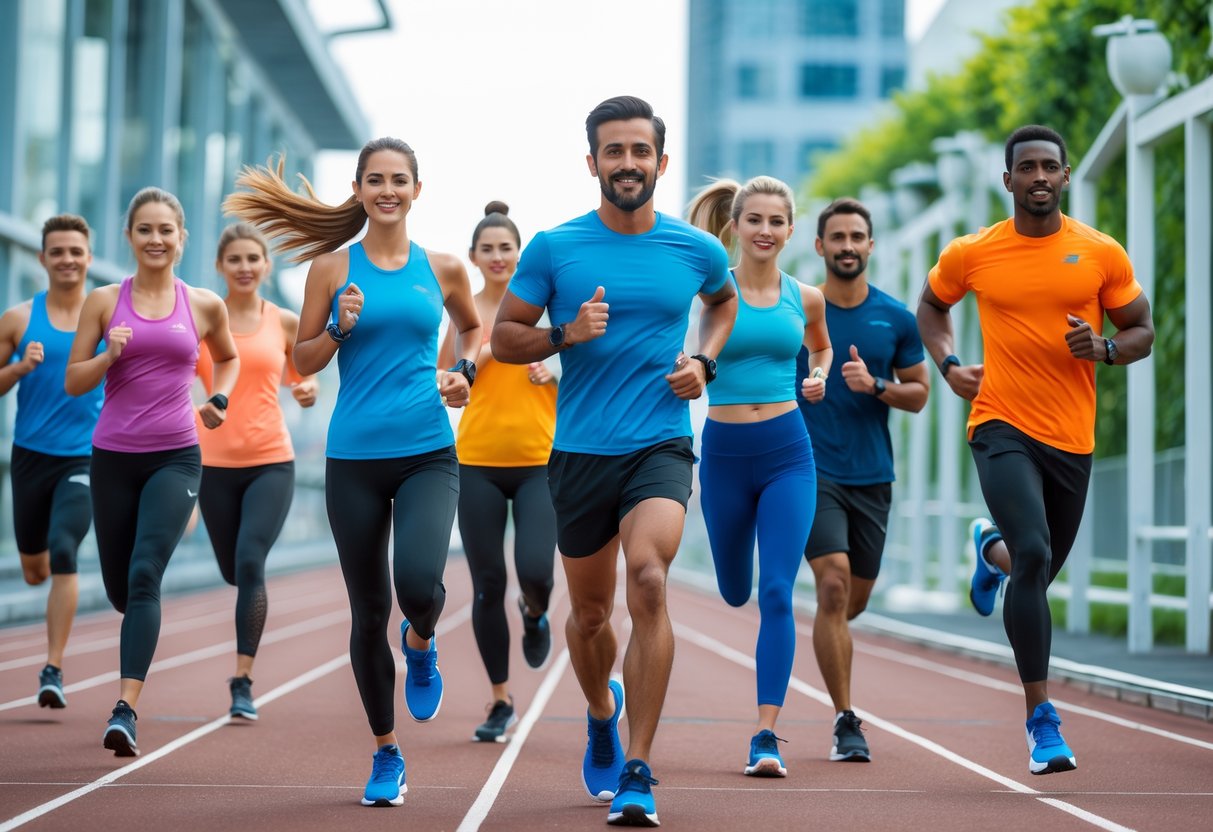
Several important elements shape the sportswear market today. They affect what brands produce and what consumers want. These include new technologies, social influences, and a growing focus on responsible production.
Role of Technology and Innovation
Technology plays a major role in sportswear design and performance. Advances in fabric science have led to materials that are more breathable, durable, and water-resistant. For example, brands now use smart textiles that can regulate temperature or monitor vitals during exercise.
Innovation also includes improved manufacturing processes that allow for better fit and comfort. Customized products tailored to individual needs are becoming more common, driven by digital tools and 3D printing. These tech advancements help athletes perform better and make everyday wear more comfortable.
Impact of Social Media and Athleisure
Social media platforms like TikTok heavily influence sportswear styles. Trends spread quickly, encouraging brands to adapt fast. This has increased demand for clothing that blends athletic function with everyday fashion, known as athleisure.
Athleisure is popular because it fits active lifestyles without sacrificing style. Consumers seek outfits that work for workouts and casual wear. Brands respond by mixing bright colors, bold designs, and versatile pieces. This shift blurs the line between fitness gear and casual clothing.
Sustainability and Ethical Manufacturing
Sustainability has become a key driver in sportswear trends. Brands are focusing on eco-friendly materials like recycled polyester and organic cotton. These choices reduce waste and lower the carbon footprint.
Ethical manufacturing is also important. Consumers expect transparency about how and where products are made. Fair labor practices and reducing harmful chemicals are gaining priority. Brands that commit to these values can attract customers who want responsible, long-lasting products.
How Cultural Shifts Shape Sportswear Fashion
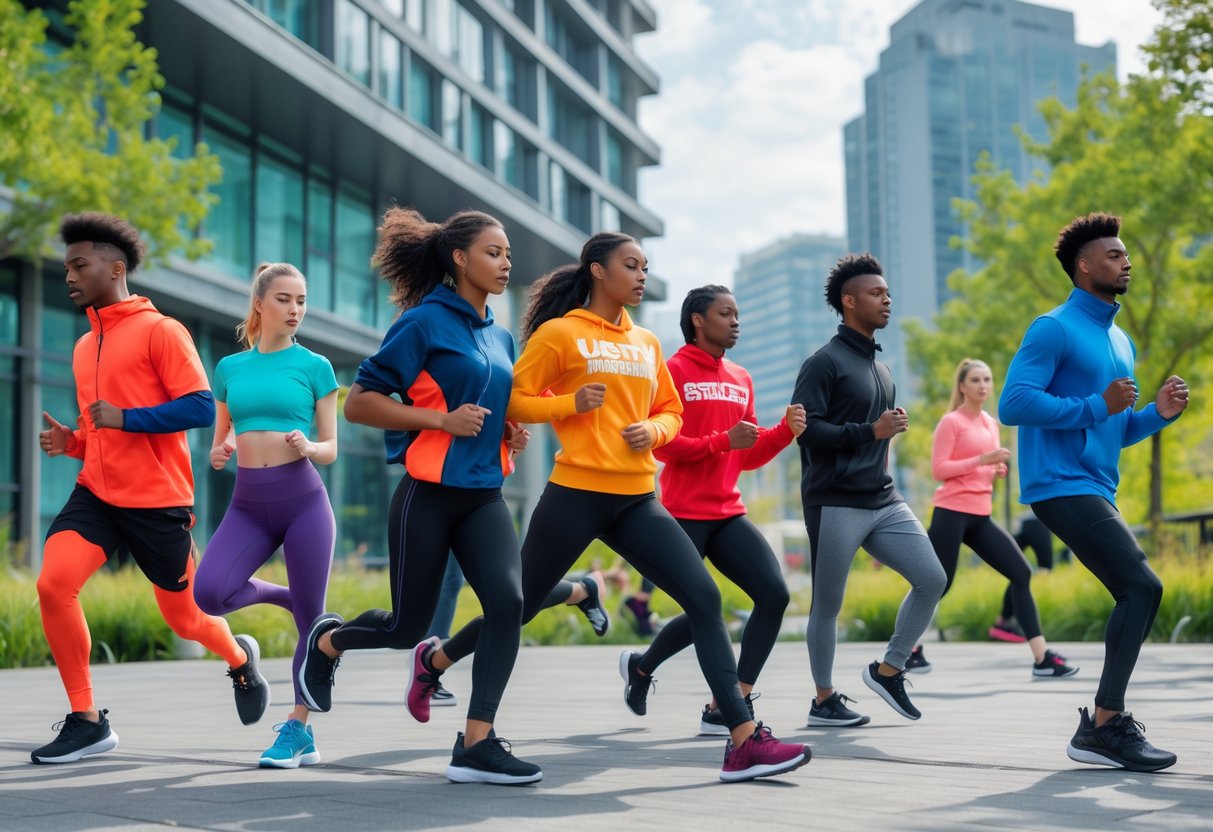
Sportswear today reflects changes in society and culture, influencing how brands design and market their products. These shifts focus on inclusivity and new partnerships that blend sportswear with high fashion.
Gender Inclusivity in Design
Sportswear brands increasingly create clothing that fits all genders. This change reflects a growing demand for gender-neutral options that break the old rules of men’s and women’s sportswear.
Designers focus on comfort, fit, and style without limiting choices by gender. Many collections now include loose fits, versatile colors, and adaptable fabrics. This shift helps more people feel accepted and represented.
Inclusivity also pushes brands to use marketing that shows diversity. Campaigns highlight athletes and models with various gender identities to connect with a wider audience. This approach challenges traditional sportswear norms and broadens the market.
Collaboration Between Sportswear Brands and Designers
Sportswear companies partner with well-known fashion designers to create unique collections. These collaborations mix performance gear with high-end style, reaching customers beyond athletes.
These partnerships often produce limited-edition items that combine technical materials with eye-catching designs. Popular examples include sneakers with bold colors and tracksuits featuring new patterns.
Such collaborations boost brand visibility and attract fashion fans who may not normally buy sportswear. They also encourage innovation, as fashion designers bring fresh ideas to sportswear functionality and look.
This blending of fashion and sportswear drives new trends and changes how the public views athletic clothing.
Frequently Asked Questions
What materials are dominating the sportswear market this year?
Recycled polyester leads as a popular sustainable fabric. It offers durability and moisture-wicking properties.
Other materials include blends designed for breathability and stretch. These support both intense workouts and casual wear.
How is technology influencing the design of sportswear?
Wearable technology is integrated into clothing to track fitness and provide real-time feedback.
Smart fabrics that adjust to temperature and enhance comfort are growing in use. This makes sportswear more functional.
What are the leading color themes in sportswear collections for the current season?
Bold and futuristic patterns dominate color choices. Bright neons and metallic tones are common.
There is also a trend toward customizable color options to match personal style.
How are sustainability practices being integrated into sportswear manufacturing?
Many brands use recycled and eco-friendly materials to reduce environmental impact.
Manufacturers also focus on efficient production methods to lower waste and energy use.
What styles are prevalent in women’s activewear currently?
Multi-functional activewear designs are popular. These styles work for exercise and everyday activities.
Layering pieces and customizable fits are favored to suit different body types and preferences.
How have sports brands adapted to the lifestyle shift towards athleisure?
Brands emphasize comfortable, stylish options that transition from workout to casual wear.
They create versatile pieces with adaptive fabrics and designs that meet daily lifestyle needs.

